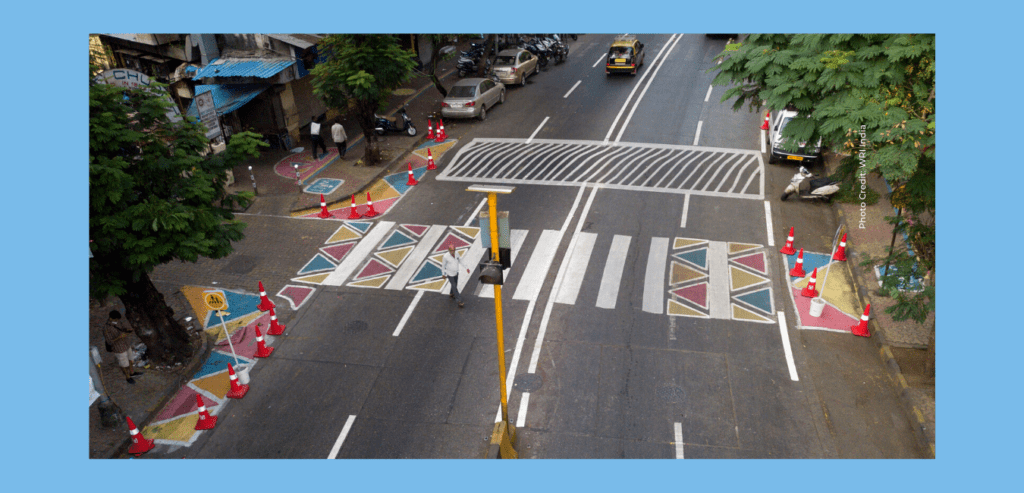Author: Rohit Tak and Lekshmy Hirandas
A good measure of how child-friendly a city is, is how well children can independently play, connect socially, and access schools.
After numerous waves of Covid-19, parents across India and the rest of the world, remain concerned about letting their children ride public transport and school buses. This behaviour change can accelerate motor-vehicle dependency for school-related commutes and will undoubtedly increase poor air quality and pollution. In addition to this, private cars limit physical activity and physical distancing at school entrances, and increase noise pollution.
To build a better future for young citizens, a holistic approach is needed. This is especially true in regards to the accessibility of schools. If we want to motivate children to walk to school, then urban design must take walkability, road safety, design strategies, and above all, a child’s lens to transform school streets into safer, vibrant, and playful ‘school zones’.

WRI India under Bloomberg Initiative for Global Road Safety and in partnership with the Municipal Corporation of Greater Mumbai, Mumbai Traffic Police and the Christ Church School, has successfully implemented a safer school zone in the Byculla neighborhood in Mumbai, India. The design of this school zone has been developed with the school students to support their needs, likes, and aspirations from the city for an improved experience as they access schools. Their participation in the transformation was to empower children to become the change makers, to bring about the changes they want to see.
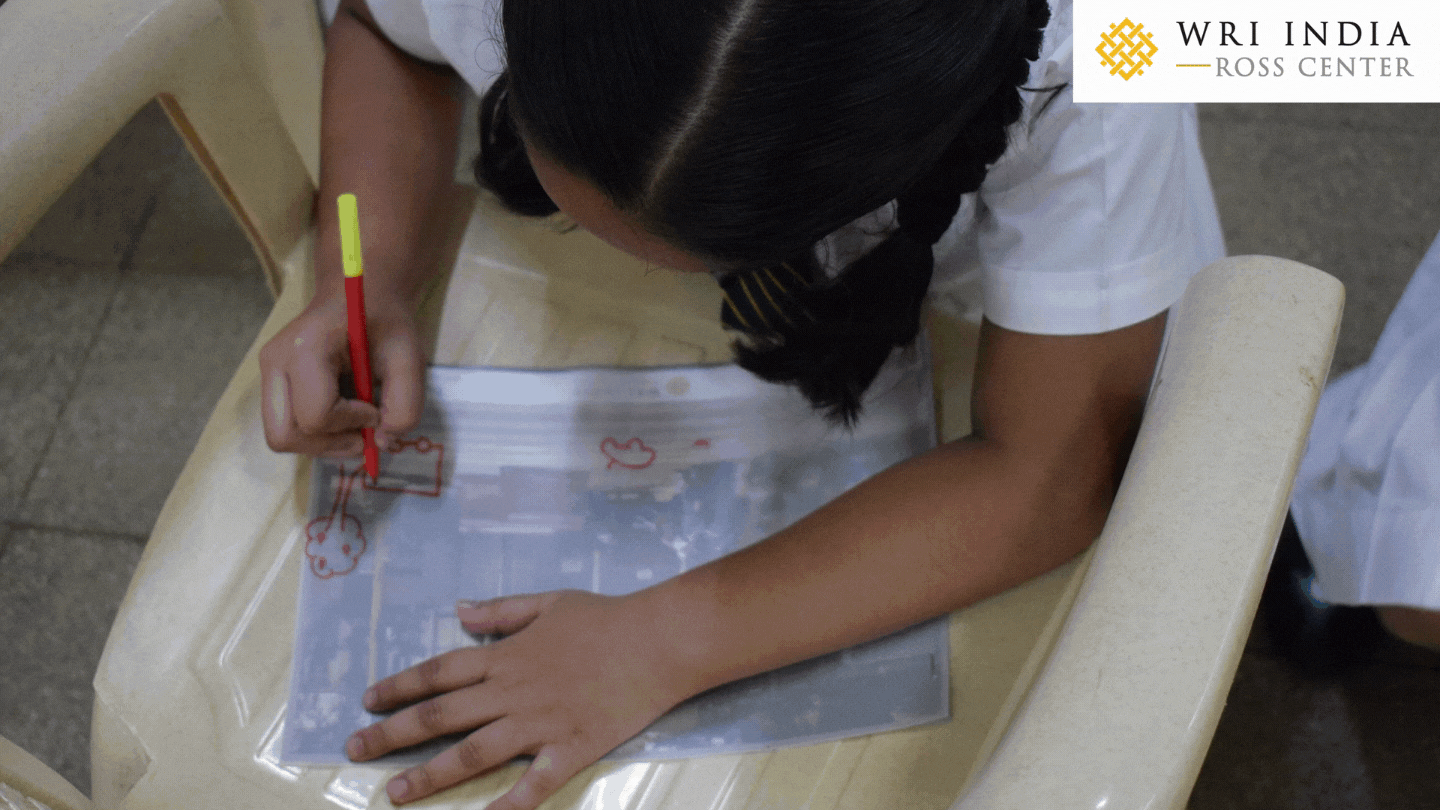
The six design elements that can improve the areas around a school for children
The following paragraphs illustrate the six school zone design elements, their implementation using tactical urbanism and also look at the impact on children’s and other street users’ experiences during the trial period.
1. Delineation of School Zones
School Zones refer to the area from outside the school’s entrance to the nearest public transport stop. The zones ensure that students feel confident walking to school. Those coming from further away, can be dropped off by parents at the edge of the zone and walk the final stretch to school. For this pilot project in Mumbai, the school zone was defined as approximately 200m long stretch, providing access to the students of both the Christ Church School and St Agnes School.
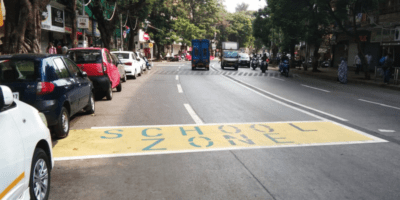
Delineation of School Zones. Photo Credit: WRI India.
2. Road markings and signage
Road markings ensure a smooth and orderly flow of traffic. In this project, the start of the zone was depicted with signs on the road that said ‘School Zone’ and ‘School Zone Ahead’. The other signage utilised here included those to indicate pedestrian crossings, ‘Slow Down’ and ‘Stop’ sights at appropriate locations such as intersections and crossing.
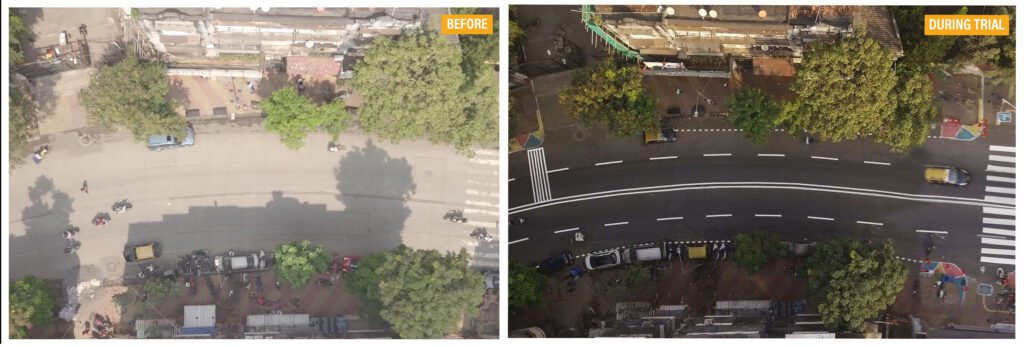
Road Markings and Signage. Photo Credit: WRI India.
3. Vibrant pedestrian crossings
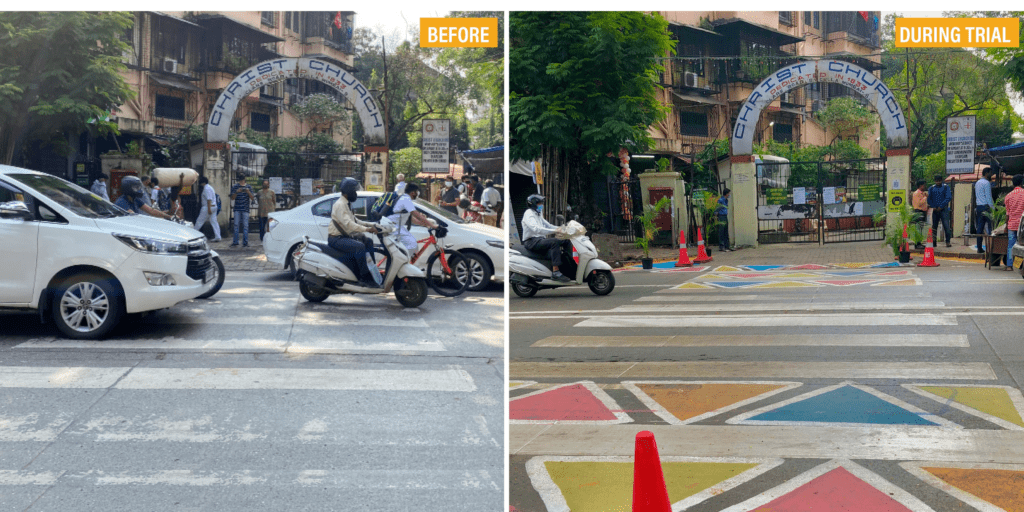
Vibrant Pedestrian Crossings.Photo Credit: WRI India.
4. Bulb-outs
Bulb-outs are extensions to footpaths that help reduce the crossing distance and limit pedestrians’ exposure to moving vehicles. At this stretch, bulb-outs were provided at locations where children usually wait before crossing the street. These bulb-outs also help in reducing speeds by 2-8 kph.
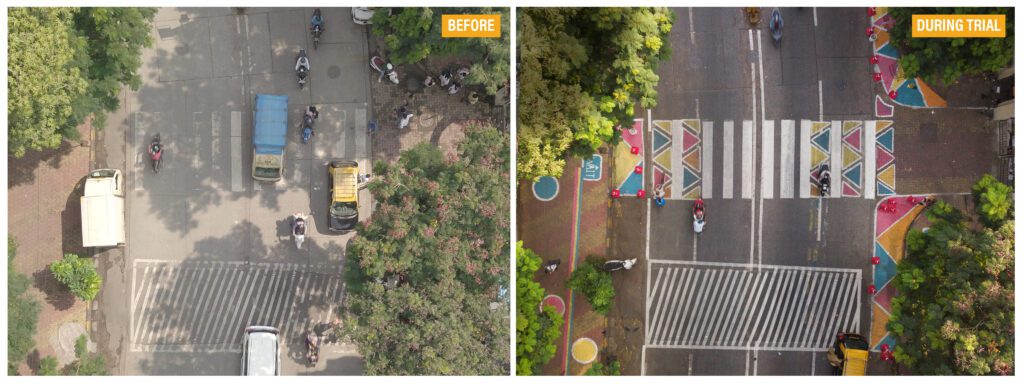
Bulb-out. Photo Credit: WRI India.
5. Speed calming measures
Speed calming measures are essential at all locations where pedestrians are likely to approach moving vehicles, especially at intersections that lack signals and crossings. As the speed of a vehicle increases, the driver’s field of vision narrows, making it harder for them to see small children or react to sudden events, like a child running into the street. Children generally have a limited understanding of speed and their cognitive skills are also in the development stage. Speed calming measures near Christ Church School and at the entrance of St. Agnes School helped regulate speeds at the crossings by 17%.
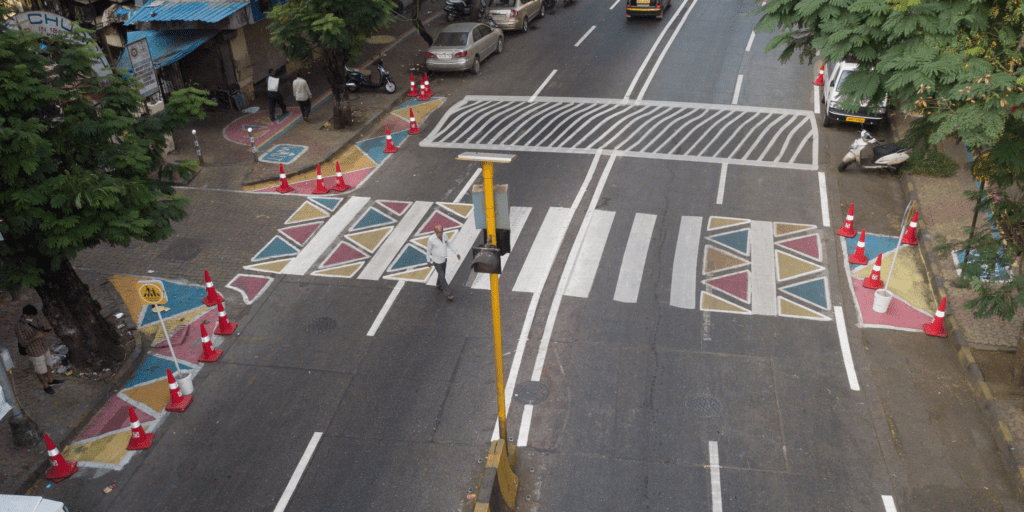
Speed calming Measures. Photo Credit: WRI India
6. Informative footpaths
We need to consider how streets look from a children’s perspective too. In this school zone, the design included colourful pavement markings, guide strips on the footpath and simple road markings to enhance children’s experience of walking along the footpath. The markings directed children to the school entrance and public spaces in the school zone. The guide strips delineated a clear walking zone on the footpath and directed children to safety with a colourful signage that read ‘Wait’.

Active, Vibrant, and Informative Footpath. Photo Credit: WRI India.
Assessment of the transformation, and the way forward
120 people were surveyed before and during the trial. These included 40 children, 40 pedestrians, 20 business operators, and 20 motorists. The survey revealed that 41.3% motorists stopped at the vibrant pedestrian crossing compared to the 9.8% who stopped at a different, nearby crossing. 98% users also felt the street was safer during the trial than before and 93% children also felt that the street was more accessible.
The success of the Christ Church School Zone Trial helped to demonstrate to the authorities just how smaller changes in street design around schools’ can make streets safer for children. It also helped the Municipal Corporation of Greater Mumbai make a case for the permanent transformation of this street into a child-friendly school zone. Lastly, the success of this project helped the state of Maharashtra start discourse around scaling up and introducing safer school zones in cities across the state.
Our key learning? That state-wide Safe Access to Schools Initiative, a resultant of this project, can encourage more children to walk or cycle to their schools, which will help them to adopt a healthier and more active lifestyle but also reduce carbon emissions.
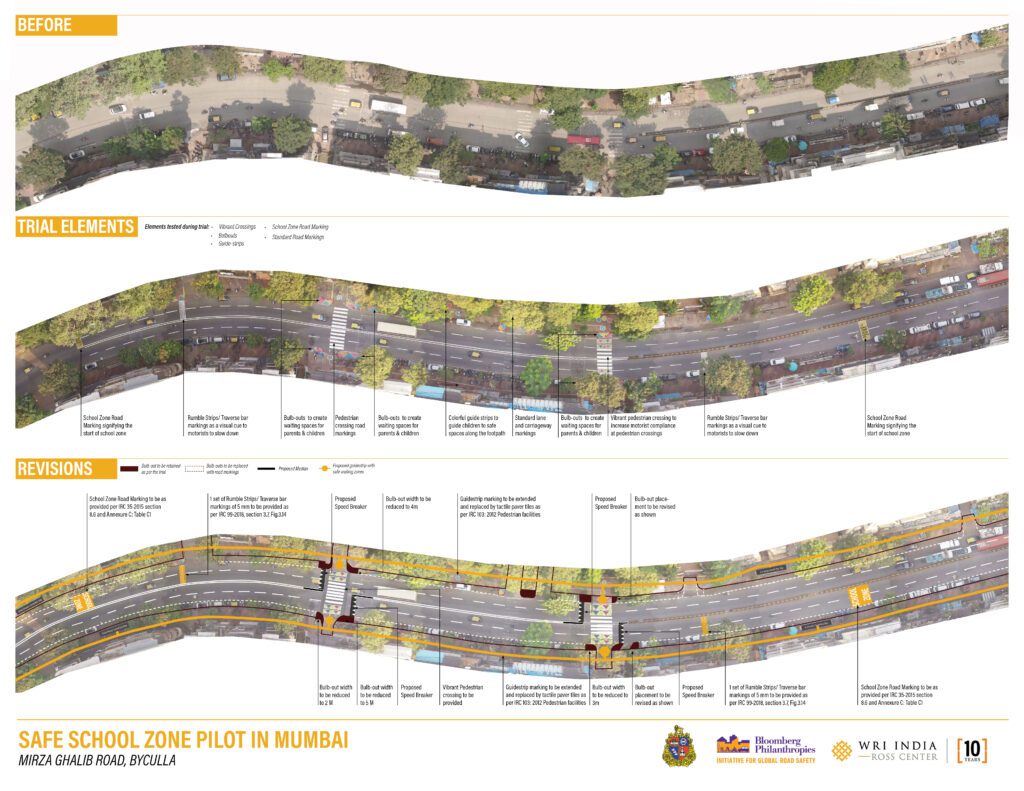
About the Authors
The Ideas4Action series aims to inspire with ideas that have worked in other cities and countries so that you too, can take action in your own city. Read more of our blogs here.
This work is licensed under a Creative Commons Attribution-NonCommercial-NoDerivatives 4.0 International License. When re-sharing this content please ensure accreditation by adding the following sentence: ‘This blog was first published by the Global Alliance – Cities4Children (www.cities4children.org/blog)’

